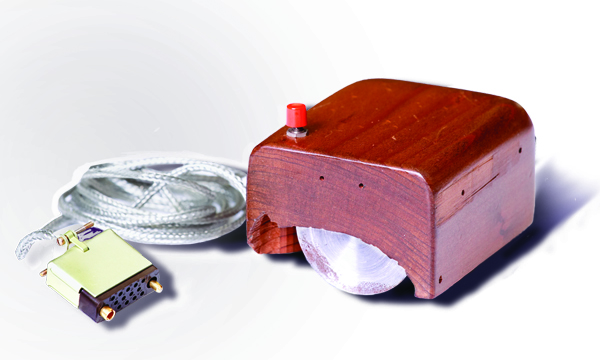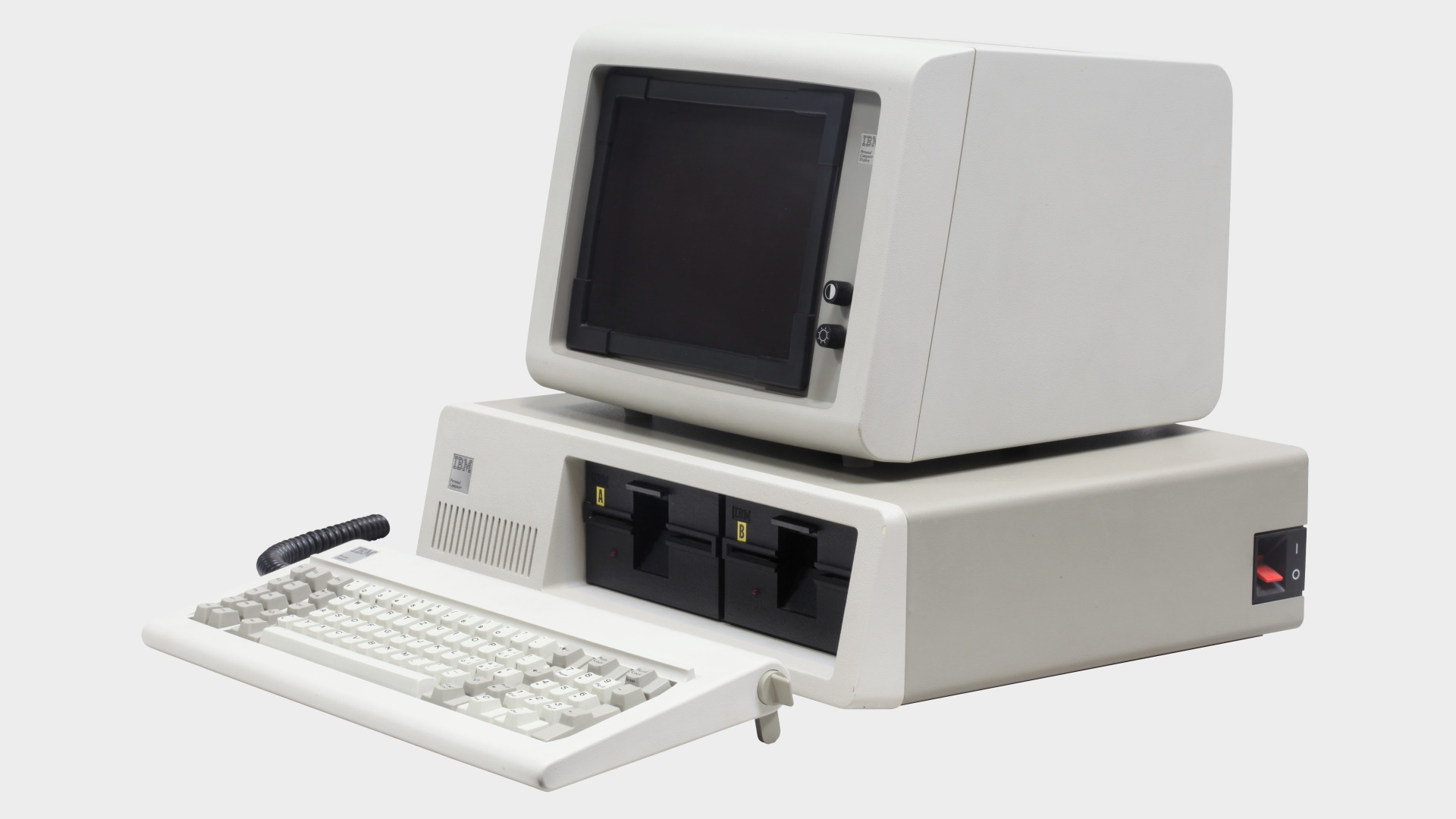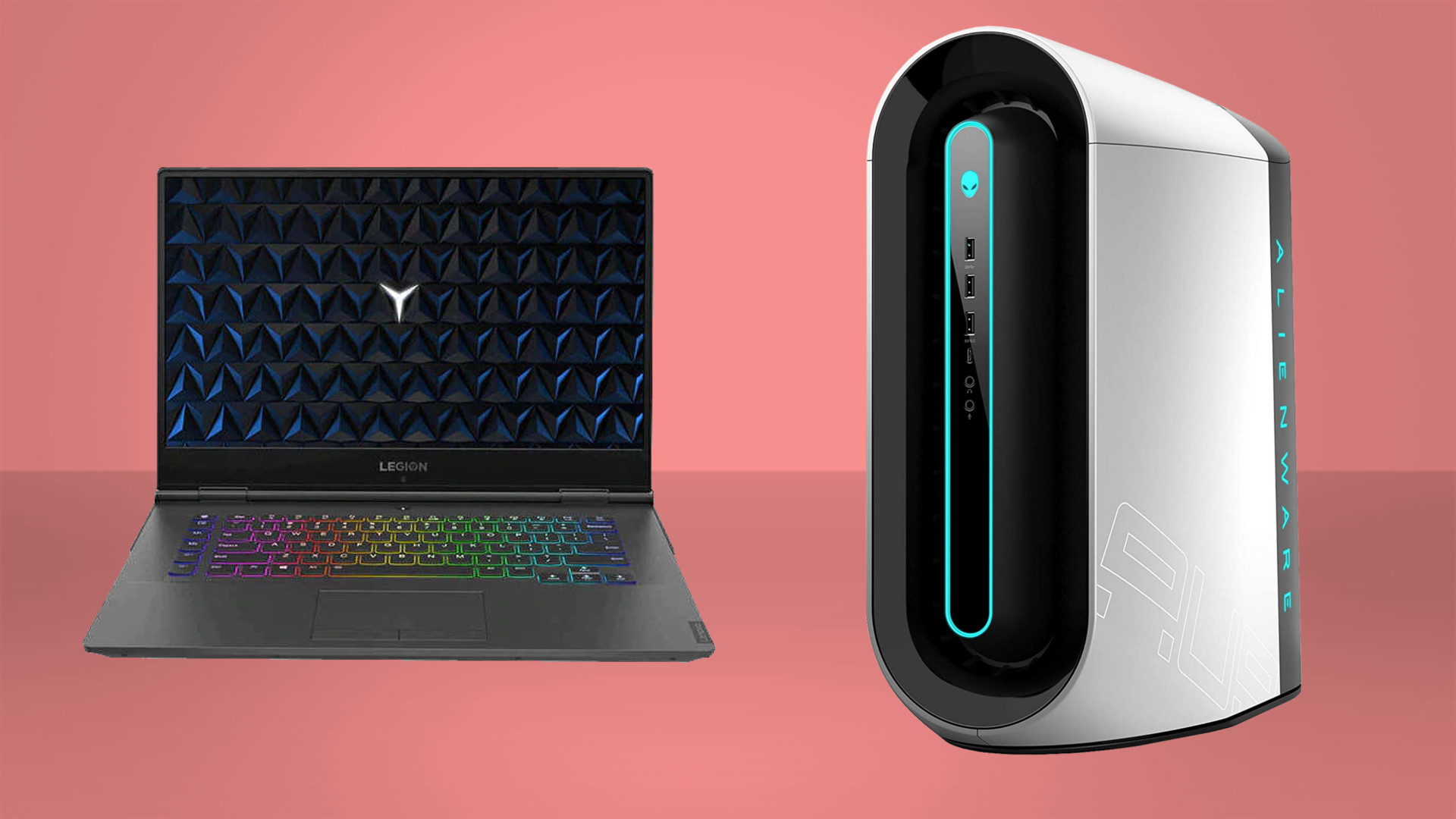Celebrating 50 years of the hardware that makes our PCs tick
From mice to monitors, let’s spool up those origin stories.

Apparently, it’s the 50th anniversary of the very first commercial video game, a commemoration to which many will no doubt take profound epistemological exception on account of some or other obscure oscilloscope-based laboratory curiosity.
Anyway, to complement that peerless gaming landmark and provide plenty more opportunities for a fact-checking furore, here is a list of PC hardware firsts from the annals of technology. Have at ‘em, kids.

The first mouse
Arguably, the first computer pointing device roughly the size and shape of a rodent and with a cable resembling a tail dates back to 1964.
Working at the Stanford Research Institute, Bill English helped Douglas Engelbart build the first mouse prototype based on conceptual work done the previous year by Engelbart.
As it happens, that mouse was used as a critical part of what has since become known as the 'Mother of All Demos', a keynote given in 1968 by Englebert in which he demonstrated for the first time in a single system with many of the core elements of modern personal computing, including a GUI with resizable application windows, hypertext, the command prompt, video conferencing, word processing and collaborative real-time editing.
English and Englebert’s mouse used wheels rather than a trackball to register movement. The first mouse based on a trackball was offered for sale in 1968 by the German company AEG-Telefunken as an input device for its SIG 100 vector graphics terminal, a subsystem of a mainframe computer. The mouse weighed nearly half a kilo and had a single input button.
As for the first mouse attached to something akin to a personal computer, that came with the Xerox Alto of 1973, a single-cabinet machine with a list price of around $100,000 in today’s money.
Keep up to date with the most important stories and the best deals, as picked by the PC Gamer team.
In the early 1980s, the Xerox 8010, Sun-1 and Apple Lisa began to popularise the mouse, with Logitech introducing its first third-party mouse in 1982, the same year that Microsoft added mouse compatibility to MS Word.

The first hard drive
Problem is, the IBM 350 was the size of a large cupboard.
The first hard disk drive (or HDD for short) dates way back to 1956 and the IBM 305 RAMAC mainframe with its IBM Model 350 disk storage.
It was the first such system to store and retrieve data on a magnetic disk via a moving head.
The IBM Model 350 was 60-inches long, 68-inches high and 29-inches deep and contained 50 magnetic disks rotating at 1,200RPM and had a total capacity of 3.75MB. Seek time averaged about 600 milliseconds.
Problem is, the IBM 350 was the size of a large cupboard. Not exactly the stuff of personal computing. Instead, it was the early 80s that saw several landmarks, including the first desktop PCs with built-in HDDs such as 1983’s IBM PC XT and its capacity of 10MB.
The hard drive as we know it arguably arrived that same year from Rodime PLC in the UK, which introduced the first 3.5-inch drives, the format that soon became the standard for personal computing.
Colorado-based PrairieTek then introduced the first 2.5-inch HDD in 1988. Together, the 3.5-inch and 2.5-inch form factors dominated PC storage until the solid-state era rejigged storage media.

The first GPU
How, exactly, do you define a GPU or graphics processing unit? As early as the 1970s, so-called arcade games had dedicated circuitry for rendering graphics. In the 80s, consumer computers like the Commodore Amiga had dedicated graphics chips. By the 1990s several vendors offered add-in boards for accelerating graphics that resembled today’s high-end GPUs in concept, including cards from S3, ATI (now AMD), PowerVR, and 3dfx.
Arguably, it was Sony that first coined the term GPU in 1994 in reference to the Toshiba-designed graphics chip in the PlayStation One.
But we’ll give the accolade of the first GPU to the Nvidia GeForce 256 of late 1999. It was the first add-in board for a PC to be marketed as a GPU or Graphics Processing Unit.

Black Friday 2021 deals: the place to go for the all the best early Black Friday bargains.
Just as important, it was the first consumer PC card to offer a single-chip graphics solution capable of transform, lighting, triangle setup and clipping and rasterising.
It was the hardware transform and lighting support that really set the GeForce 256 apart, offloading those tasks from the CPU and massively increasing rendering performance compared to the competition.
Just for the record and purely for fun, the GeForce 256 or NV10 as the chip was codenamed, was built on TSMC’s 220nm process and contained 17 million transistors. Nvidia’s latest GPU, the GA102 monster in the GeForce RTX 3090, is produced on an 8nm process and packs 28 billion transistors. Progress doesn't half enjoy messing with numbers.

The first flat panel monitor
With the term flat panel monitor, we’re deliberately distinguishing it from any kind of cathode ray or CRT display, some of which were latterly available with flat surfaces. True flat panels are far lighter and thinner than any CRT and have come to dominate display tech despite some obvious shortcomings.
Those issues largely relate to LCD or liquid crystal technology, which in turn has come to dominate the flat-panel market.
So, what and when was the first LCD flat panel monitor?
The first simple LCD panels in pocket calculators and digital watches were seen in the 1970s. It was 1972 when the now-dominant active-matrix thin-film transistor or TFT panel was first prototyped by Westinghouse in Pennsylvania, while 1982 saw the first LCD TV from Seiko Epson in Japan, which was actually a watch, albeit monochrome, with Seiko also first to the full-colour LCD TV in 1984, this time in a pocket device.
In 1988, Sharp demoed a 14-inch full colour TFT LCD.
In the late 80s and early 90s, laptop and desktop displays with monochrome panels appeared, pe-dating the first desktop full-colour monitors.
Indeed, pinning down the very first commercially available full-colour LCD monitor is a tricky task. But certainly one of the very earliest was the NANAO F-1020 from Eizo in 1993, a 10.4-inch TFT panel with a resolution of just 640 by 480 pixels. By Eizo’s own estimation, the F-1020 was a flop.
But it was in 1998 that Eizo launched the L66, an 18-inch flat panel. It was the first to offer 1,280 by 1,024 pixels and arguably the first to really give CRT tech a run for its money.
Speaking of giving CRTs a run for their money one of the LCD monitors greatest weaknesses then and now has been response rate. Today’s quickest LCD panels are rated at around 1ms for pixel response. Back in 1997 when flat panels were first becoming widely available, many manufacturers didn’t even quote response times. One exception was Panasonic which was particularly proud of the fast response of its 14-inch LC40, a 1,024 by 768 resolution model. Oh, and it was claimed to be good for an impressive 50ms response times.

The first PC
Of course, the single most important first in this context is the PC itself. Again, narrowing down the definition of what actually makes for a PC or personal computer isn’t a trivial task. You could argue that kit computers like the MITS Altair of 1975 and indeed the Apple I from 1976 were among the very first personal computers. Indeed, the Altair even used an Intel CPU.
But we reckon it was 40 years ago and the 1981 introduction of the IBM 5150, usually known simply as the IBM PC, that provided the critical template for the PC standard as its known today.

Best gaming PC: the top pre-built machines from the pros
Best gaming laptop: perfect notebooks for mobile gaming
Critically, the IBM 5150 used the Intel 8088 processor, a variant of the hallowed Intel 8086, the chip that has given its name to the x86 architecture itself and has provided the platform upon which the PC has simultaneously marched ever forward while maintaining backwards compatibility.
The IBM 5150’s 8088 chip, incidentally, ran at a spectacular 4.7MHz, while the system’s memory started at 16K and could be increased to a maximum of 256K with optional memory cards.
Its optional 13-inch colour monitor offered four colours and a colour resolution of 320 by 200 pixels. At launch there was no hard drive option and storage was limited to the capacity of the 5.25-inch floppy drive, offering a total of 320K of storage across the two sides of the disk.
Even adding a mouse required adding an expansion card. All of which is worth remembering the next time you’re feeling glum about your PC’s inability to crank quite enough frames at 1440p to make the most of your monitor’s 240Hz refresh rate.

Jeremy has been writing about technology and PCs since the 90nm Netburst era (Google it!) and enjoys nothing more than a serious dissertation on the finer points of monitor input lag and overshoot followed by a forensic examination of advanced lithography. Or maybe he just likes machines that go “ping!” He also has a thing for tennis and cars.

